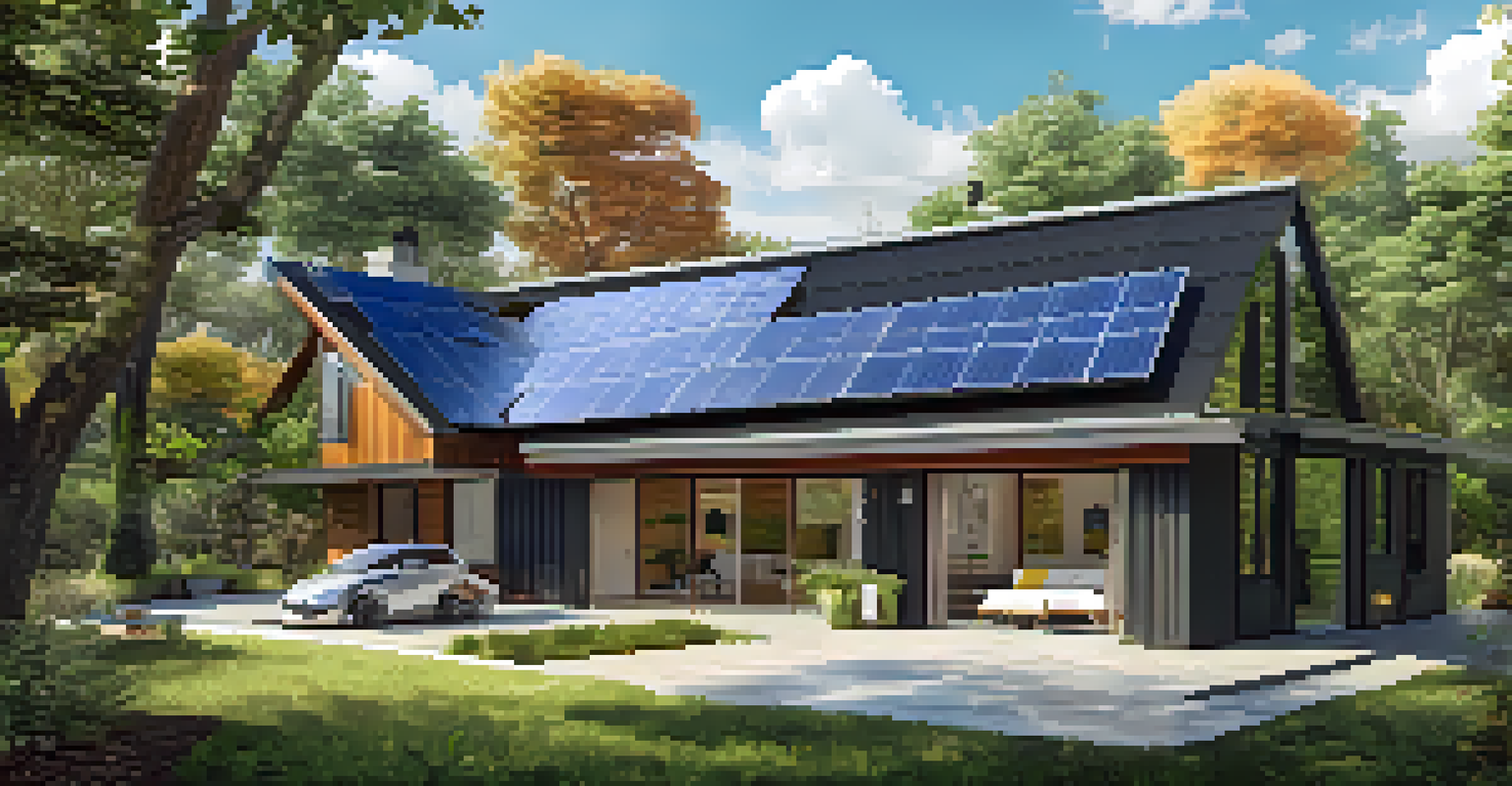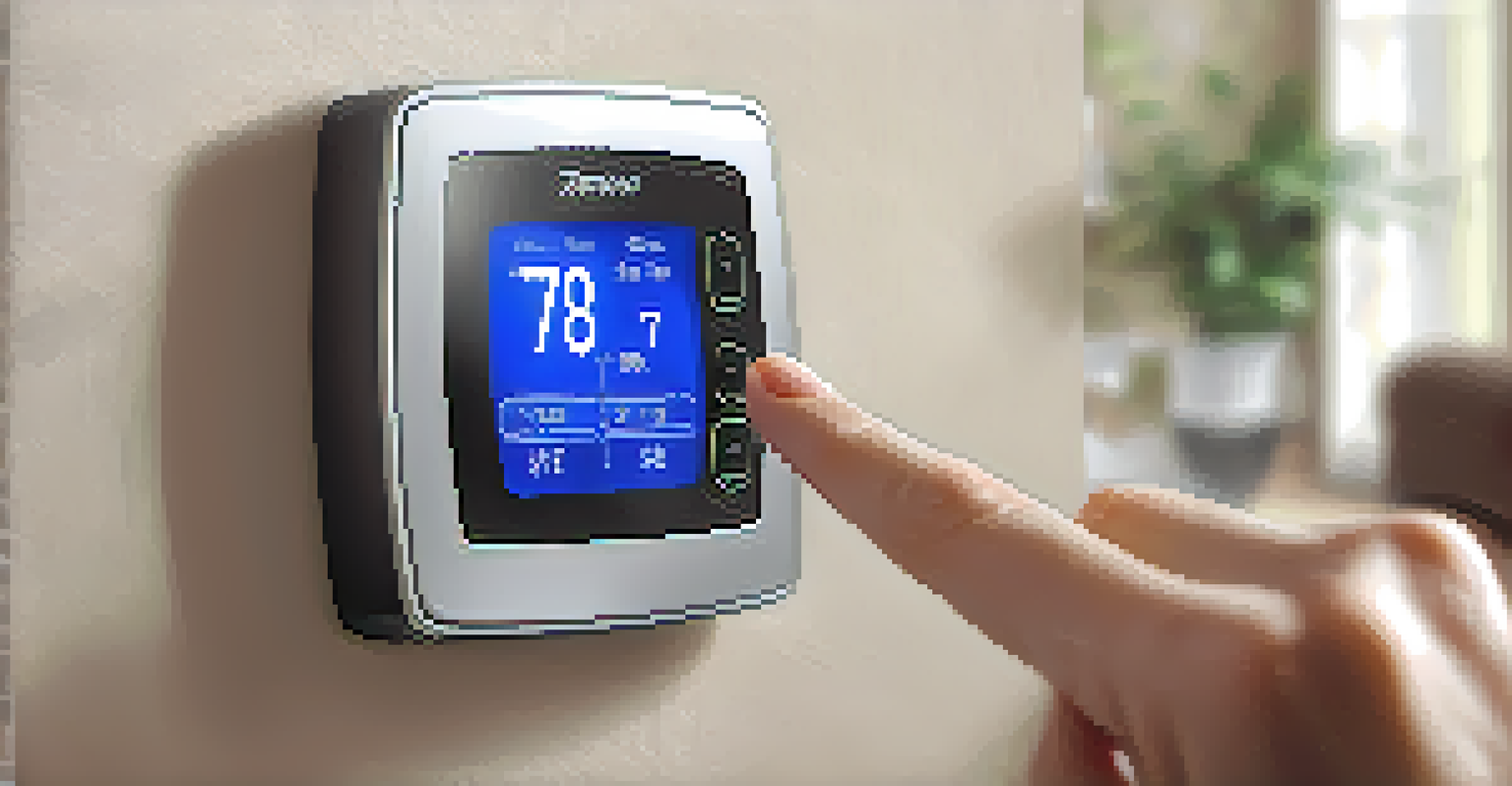The Long-Term Savings of Energy-Efficient Home Renovations

Understanding Energy Efficiency and Its Benefits
Energy efficiency refers to using less energy to provide the same service. For example, energy-efficient appliances consume less power while delivering the same performance as standard ones. This can lead to significant savings on your energy bills over time.
Energy efficiency is doing more with less.
When you invest in energy-efficient home renovations, you’re not only reducing your monthly expenses but also contributing to a healthier environment. Less energy consumption means lower greenhouse gas emissions, which is a win-win for both your wallet and the planet.
In the long run, these renovations can boost your home's resale value. Buyers are increasingly looking for homes with energy-efficient features, making your property more attractive in a competitive market.
Common Energy-Efficient Home Renovations
Some popular renovations include upgrading insulation, installing energy-efficient windows, and replacing old heating and cooling systems. For instance, adding better insulation helps keep your home warm in winter and cool in summer, reducing the need for heating and cooling.

Replacing single-pane windows with double or triple-pane versions can also drastically cut down on energy loss. This not only improves comfort but can lower your energy bills significantly over time.
Energy Efficiency Saves Money
Investing in energy-efficient renovations can significantly reduce your energy bills and increase your home's resale value.
Additionally, switching to energy-efficient lighting, such as LED bulbs, can lead to impressive savings. These bulbs consume up to 75% less energy and last significantly longer than traditional incandescent bulbs.
Calculating Your Potential Savings
To understand the financial benefits of energy-efficient renovations, start by calculating your current energy costs. This will give you a baseline to compare against potential savings from upgrades. For example, if you spend $200 a month on energy, even a 20% reduction can save you $480 a year.
The greatest threat to our planet is the belief that someone else will save it.
Consider using online calculators or consulting with energy auditors who can provide detailed insights into potential savings based on your specific renovations. They can help identify which upgrades will yield the best return on investment.
Keep in mind that some renovations may have higher upfront costs, but the long-term savings can far outweigh these initial expenses. A well-planned renovation can result in lower bills for years to come.
Government Incentives and Rebates
Many local and federal governments offer incentives for homeowners who make energy-efficient upgrades. These can include tax credits, rebates, or grants, which can significantly reduce the overall cost of renovations. For example, you might find a rebate for upgrading to an energy-efficient HVAC system.
Researching available programs can lead to substantial savings, making it easier to justify the initial investment. Websites like Energy.gov provide valuable resources to help homeowners navigate these options.
Government Incentives Available
Many local and federal programs offer rebates and tax credits for energy-efficient upgrades, making them more affordable.
By taking advantage of these incentives, you not only save money upfront but also enhance your home's energy efficiency, leading to ongoing savings down the road.
The Environmental Impact of Energy Efficiency
Energy-efficient renovations do more than help your wallet; they also contribute positively to the environment. By reducing energy consumption, you decrease your carbon footprint and help combat climate change. For example, energy-efficient homes use less fossil fuel, which is a significant contributor to greenhouse gas emissions.
Moreover, these renovations promote sustainable living practices. As more homeowners embrace energy efficiency, the cumulative effect can lead to a noticeable reduction in overall energy demand.
Choosing energy-efficient options not only benefits you but also sets an example for others. When your neighbors see your energy-efficient upgrades, they may be inspired to make similar changes, further amplifying the positive environmental impact.
Long-Term Financial Security Through Energy Efficiency
Investing in energy-efficient upgrades is akin to securing a long-term financial strategy. When you reduce your energy bills, you free up money that can be redirected to savings or other investments. For instance, those savings could go toward retirement or funding a child's education.
Additionally, as utility costs continue to rise, energy efficiency can shield you from future price hikes. Homes that are energy-efficient are less susceptible to fluctuations in energy prices, providing a more stable financial outlook.
Positive Environmental Impact
Energy-efficient homes reduce carbon footprints and promote sustainable living, benefiting both homeowners and the planet.
In essence, these renovations can be viewed as an investment in your financial future. The less you spend on energy, the more you can save for other important goals.
Embracing the Energy-Efficient Lifestyle
Adopting an energy-efficient mindset extends beyond renovations. It involves making conscious choices in daily life, such as turning off lights when leaving a room or using programmable thermostats. These small actions can accumulate significant savings over time.
Additionally, engaging with your community about energy efficiency can foster a culture of sustainability. Share tips, participate in local energy-saving initiatives, or join online forums to exchange ideas and experiences.

Ultimately, embracing an energy-efficient lifestyle is about making informed decisions that benefit your home, your finances, and the environment. The more you incorporate these principles, the greater the impact you’ll have.